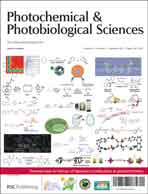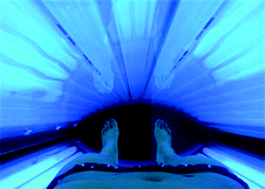September’s issue of Photochemical & Photobiological Sciences is dedicated to the memory of Professor Ugo Mazzucato, who passed away on 15th October 2017. Guest-edited by Anna Spalletti, Fausto Ortica and Loredana Latterini, this issue honours the memory and achievements of Professor Mazzucato as an eminent photochemist, a rigorous teacher and a friendly colleague.

Browse a selection of the articles included below:
Wavelength dependence and wavelength selectivity in photochemical reactions
Stefano Protti, Davide Ravelli and Maurizio Fagnoni
Photochem. Photobiol. Sci., 2019, 18, 2094-2101
DOI: 10.1039/C8PP00512E, Perspective
Photochromic rotaxanes and pseudorotaxanes
Shilin Yu, Nathan D. McClenaghan and Jean-Luc Pozzo
Photochem. Photobiol. Sci., 2019, 18, 2102-2111
DOI: 10.1039/C9PP00057G, Perspective
VUV-photolysis of aqueous solutions of hydroxylamine and nitric oxide. Effect of organic matter: phenol
Mónica C. Gonzalez and André M. Braun
Photochem. Photobiol. Sci., 2019, 18, 2240-2247
DOI: 10.1039/C9PP00143C, Paper
The photoisomerization of cis,trans-1,2-dideuterio-1,4-diphenyl-1,3-butadiene in solution. No bicycle-pedal
Jack Saltiel, Christopher E. Redwood and Ratheesh Kumar V. K.
Photochem. Photobiol. Sci., 2019, 18, 2174-2179
DOI: 10.1039/C9PP00113A, Paper
Optimized synthesis of luminescent silica nanoparticles by a direct micelle-assisted method
Benedetta Del Secco, Luca Ravotto, Tatiana V. Esipova, Sergei A. Vinogradov, Damiano Genovese, Nelsi Zaccheroni, Enrico Rampazzo and Luca Prodi
Photochem. Photobiol. Sci., 2019, 18, 2142-2149
DOI: 10.1039/C9PP00047J, Paper
The chiral photocycloaddition of a cyclohexenone derivative with a chiral alkene. A DFT study
Maurizio D’Auria
Photochem. Photobiol. Sci., 2019, 18, 2191-2198
DOI: 10.1039/C8PP00521D, Paper












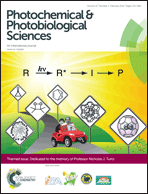 Dedicated to the memory of Nicholas J. Turro, late Professor of Chemistry at Columbia University, this issue presents a collection of articles from scientists either directly or indirectly associated with his laboratory. The collection reflects both the geographic diversity and breadth of scientific interests of those connected with Professor Turro .
Dedicated to the memory of Nicholas J. Turro, late Professor of Chemistry at Columbia University, this issue presents a collection of articles from scientists either directly or indirectly associated with his laboratory. The collection reflects both the geographic diversity and breadth of scientific interests of those connected with Professor Turro .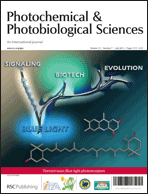
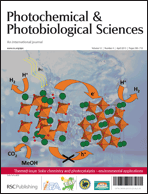
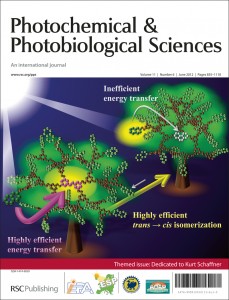

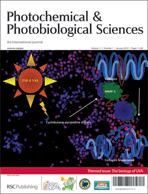 Welcome to the first issue of 2012 a themed issue on the biology of UVA! This issue dedicated to UVA contains several in-depth perspectives and original articles in the field highlighting key advances and provides an interesting and comprehensive journey through the UVA field, even those for whom this particular area is less familiar. You can read an introduction to this issue in Evelyn Sage and Rex Tyrrell’s
Welcome to the first issue of 2012 a themed issue on the biology of UVA! This issue dedicated to UVA contains several in-depth perspectives and original articles in the field highlighting key advances and provides an interesting and comprehensive journey through the UVA field, even those for whom this particular area is less familiar. You can read an introduction to this issue in Evelyn Sage and Rex Tyrrell’s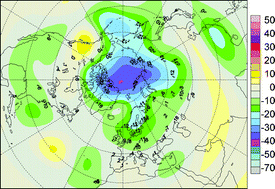 This issue is not only a themed issue, it also contains the 2011 progress report (an update on the full quadrennial report published in
This issue is not only a themed issue, it also contains the 2011 progress report (an update on the full quadrennial report published in 